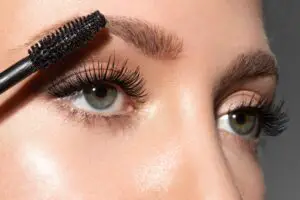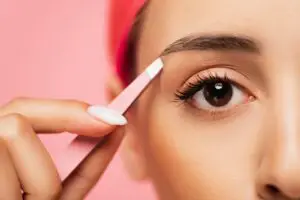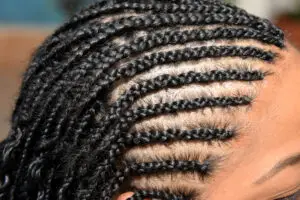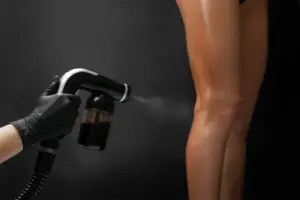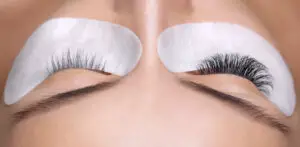Dreads and locs are popular hairstyles often associated with cultural heritage and personal expression. Although they may appear similar at first glance, there are subtle differences between the two that distinguish them from one another. To understand these distinctions, it’s essential to delve into the origins, methods, and maintenance associated with each style.
Both dreads and locs are formed by sculpting hair into rope-like strands. However, their formation techniques and appearances can vary depending on the individual’s hair type and preference. For instance, dreads are created through methods like backcombing or twisting and can result in a more textured and looser appearance, while locs may be maintained using the palm rolling or interlocking methods for a more uniform look.
When choosing between dreads and locs, personal preferences, hair type, and desired appearance play a significant role in the decision. As a result, it’s essential to recognize that each hairstyle has its pros and cons, including maintenance, styling options, and durability, which must be taken into consideration before committing.
Understanding Dreads
Dreads, often associated with the Rastafari movement, hold a rich history and cultural significance in various communities. Originating in Jamaica, dreads are deeply rooted in the Rastafarian culture, often seen as a symbol of identity and an expression of spirituality. The name “dreadlocks” stems from the term “dread,” which signifies a holy and powerful force emanating from the person wearing them.
The history of dreads dates back thousands of years, with records of them being worn by multiple cultures, including ancient Egyptians, Hindus, and Rastafarians. The Rastafarian movement, which emerged in the 1930s, played a pivotal role in popularising dreads among its followers. This spiritual and social movement, inspired by the teachings of Jamaican nationalist Marcus Garvey, encouraged people of African descent to take pride in their heritage and express their identity through their hair.
Rastafarians view their dreads as a source of energy and strength, deeply entwining their connection to their spirituality. They believe that the twists and tangles of dreads allow them to channel the energies of the universe, imbuing them with a sense of power and confidence. This belief gained further prominence through the iconic music of Bob Marley, who became a global ambassador for reggae music and Rastafarian culture.
Over the years, dreads have undergone various transformations and adaptations, with many different styles and techniques emerging. Some popular styles include freeform dreads, which form naturally through minimal intervention, and maintained dreads, which are created using specific methods like backcombing or interlocking.
In recent times, dreads have become more widely accepted, transcending their Rastafarian roots and permeating mainstream fashion and American culture. However, it is crucial to recognise and respect the rich history and cultural significance of dreads, as they remain an essential aspect of Rastafarianism and the communities who have been wearing them for centuries.
Comprehending Locs
Locs, often seen as a unique hairstyle, carry significant cultural and historical meaning within the African diaspora. As a distinctive expression of one’s identity, locs hold deep-rooted connections with African descent and heritage. This hairstyle is more than just an aesthetic choice; it is a testament to the rich legacy of a community.
The history of locs dates back thousands of years in various African societies, reflecting their cultural significance. Additionally, locs have played a vital role in the cultural identity of many individuals within the African diaspora, extending beyond the shores of the continent. Traditionally, locs would be formed and maintained through techniques such as the interlocking method, which helps retain a polished appearance and supports low maintenance requirements.
Throughout the years, locs have transitioned from being solely associated with spirituality and religious symbolism to taking on a more versatile role as a means of self-expression. Amongst the vast array of locs styles available, sisterlocks and faux locs are popular variations that cater to a diverse range of preferences. These adaptations undoubtedly contribute to the ever-evolving language surrounding locs, fostering confidence, and promoting a sense of cultural pride within the community.
While locs have their roots in African culture, they have undeniably left a lasting impact on American culture as well. The adoption of locs by high-profile celebrities and public figures has played a significant role in familiarising the broader population with this culturally rich hairstyle. Moreover, locs have transcended the realms of fashion and aesthetics, emerging as a quintessential symbol of cultural identity, unification, and empowerment.
In summary, locs are deeply entwined with the cultural heritage and history of individuals of African descent. This hairstyle offers a meaningful connection to one’s roots, while simultaneously allowing for personal expression and creativity. By understanding and appreciating the multifaceted nature of locs, we can gain a greater appreciation for their significance within the African diaspora and beyond.
Distinction Between Dreads and Locs
In order to understand the key differences between dreads and locs, it’s essential to consider their appearance, texture, maintenance, and the methods of creating them, such as interlocking and rolling.
Firstly, dreads and locs differ in appearance. While locs have a more uniform and maintained look, dreadlocks typically have a looser and less consistent appearance. Locs are often created neatly and purposefully, resulting in a well-groomed style, whereas dreads may form organically without much intervention, leading to a more natural and rugged appearance.
Texture-wise, locs and dreads also exhibit differences. Locs are formed through various methods such as coiling, braiding, and twisting, as well as letting the hair lock naturally by not combing it. Dreads, on the other hand, involve braiding, rolling, or backcombing with less effort on finishing the strands. This results in locs having a more controlled and refined texture, while dreads display a rougher and potentially frizzy texture.
Maintenance is another aspect that sets dreads and locs apart. Since locs have a uniform pattern and structure, their maintenance demands are higher, requiring regular grooming to retain their neat appearance. Dreads, however, can be more forgiving in terms of maintenance, allowing for a greater level of freedom in allowing the hair to develop its own unique form.
Interlocking and rolling are two specific methods used in creating locs and dreads. Interlocking refers to a technique involving looped tools that help in intertwining hair strands to create a well-organised loc. Meanwhile, rolling is a method commonly associated with forming dreads by manually twisting and rubbing the hair strands between the palms, resulting in a looser and less structured dreadlock.
In summary, the distinction between dreads and locs lies in the appearance, texture, maintenance, and methods used to create and maintain the hairstyles. Locs showcase a more uniform and well-groomed look, whereas dreads possess a looser, more organic appearance. The texture and maintenance of these styles also vary, with locs requiring more care and a controlled approach, while dreads offer greater freedom and flexibility in their development.
Roots and Significance
Natural hair has been celebrated in various forms and styles throughout history. Two commonly known forms are dreads and locs, both of which hold different significance and roots in various cultures. While sharing similarities in appearance, their methods, hair texture, and cultural implications set them apart.
Dreads, often referred to as dreadlocks, are created through a technique called backcombing. With this method, hair texture plays a significant role in achieving the desired appearance of dreads. They have a more organic and less uniform appearance compared to locs, giving off a more natural and messy look. The roots of dreads can be traced back to ancient cultures such as the Egyptians, Babylonians, and Native Americans, symbolising spiritual connection, cultural identity, and rebellion against societal norms.
On the other hand, locs are formed through more structured methods like coiling, braiding, or twisting. These techniques encourage the formation of cylindrical or rope-like strands of hair, resulting in a more uniform and maintained look. Locs have distinct, defined roots that are notably tidier and neater in comparison to dreads. With careful maintenance, the differences between the two become even more apparent.
In the realm of beauty, both dreads and locs are respected for their unique aesthetics and versatile styling options. However, it is essential to acknowledge that these natural hair forms hold cultural significance for many individuals. While they can be seen as fashion statements, they also reflect the strength of one’s cultural heritage and identity.
In conclusion, dreads and locs, although related in appearance, exhibit key differences in their roots, hair texture, and cultural significance. Through various methods such as backcombing, coiling, braiding and twisting, these distinct natural hair forms reflect the beauty and history of those who wear them.
Cultural Background and Impact
Dreadlocks and locs are both hairstyles with deep cultural roots and historical significance that extend far beyond their current popularity as trendy fashion statements. They have been found in various cultures across the globe, including Caribbean, Egyptian, and diaspora communities, serving as symbols of identity, heritage, and spiritual beliefs.
In the Caribbean culture, particularly among the Rastafarians, dreadlocks are considered a symbol of spiritual growth, resistance, and rejection of societal norms. The hairstyle represents their commitment to a natural, unprocessed lifestyle and their quest for spiritual enlightenment.
The Egyptian culture also played a role in the origins of locs, as they were used as protective measures for the hair and represented social status. This long-standing tradition was evident in the hair of ancient Egyptian pharaohs, who often wore locs.
In the African diaspora, dreadlocks and locs can be traced back to various African tribes, each with their unique techniques for creating and maintaining these hairstyles. These hairstyles were a way for people to maintain a connection to their cultural roots while embracing their adaptability to different environments.
There are ongoing debates in the realm of hairstyle terminology. Some people differentiate between “locs” and “dreads” based on the cultural implications, origins, and methods of formation. Regardless of the labels, both hairstyles have historical significance and are deeply intertwined with the faiths and the way of life of the people who wear them.
Throughout history and across global cultures, dreadlocks and locs have emerged as powerful symbols that not only represent individual style choices but also reflect the cultural and spiritual values of those who choose to embrace them. These hairstyles continue to inspire pride and self-expression as they adapt and evolve in a constantly changing, multicultural world.
Methods of Achieving Both Styles
There are various techniques used to achieve dreadlocks and locs hairstyles, each with their own distinct characteristics and maintenance requirements. Here, we will explore some popular methods, including two-strand twist, interlocking, palm rolling, backcombing, and Bantu knots.
Two-strand twist involves taking two strands of hair and twisting them around each other until they form a rope-like structure. This method is suitable for both dreads and locs and works well with most hair textures. As the hair grows, the roots need to be retwisted periodically to maintain the style.
Interlocking is a technique mainly used for locs, in which the hair is sectioned and then woven into itself using a tool or fingers, forming a tight knot at the base. This method requires a skilled hand and regular maintenance to ensure that the locs remain uniform and neat.
Palm rolling is a common method for creating and maintaining dreadlocks. Hair is sectioned off into small pieces and rolled between the palms in a clockwise motion. This helps to tangle and mat the hair, encouraging the formation of dreads. Regular palm rolling can help maintain the shape and prevent excessive frizz.
Backcombing is another technique used to create dreadlocks. The sectioned hair is combed backwards towards the scalp, causing the hair strands to tangle and knot together. This method can create tight, uniform dreads and is suitable for all hair types. However, backcombed dreads may require additional maintenance, such as palm rolling or interlocking, to keep them in good condition.
Lastly, Bantu knots are not a direct method of creating dreads or locs but can be used as a styling technique for both. Hair is twisted or braided and then wrapped around itself to create small bun-like knots. Bantu knots can be worn as a standalone hairstyle or used as a protective styling option for dreads and locs.
Each of these methods offers different benefits and drawbacks, and the choice ultimately depends on personal preference, hair type, and desired outcome. It is always advisable to consult with a professional hairstylist or conduct thorough research before attempting any of these techniques at home to ensure optimal results and minimise potential damage.
Dealing with Negative Connotations
When discussing the topic of dreads and locs, it’s crucial to address the negative connotations associated with the term “dreadlocks.” This term has an unpleasant history, originating from the slave trade era when Africans didn’t have the time or resources to groom their hair properly. Many people today, particularly those in the Black community, prefer using the term “locs” to describe this hairstyle in an effort to distance themselves from the painful past associated with dreadlocks.
It’s important to remember the cultural context and the different meanings behind these terms. While they’re often used interchangeably, there are subtle distinctions between dreads and locs in terms of both aesthetics and cultural significance. Dreads are typically formed by backcombing or twisting the hair, whereas locs occur naturally through a process of hair matting and tangling over time.
By choosing to use the term “locs” instead of “dreadlocks,” we acknowledge the historical baggage related to the latter term and actively work to foster a more inclusive and respectful understanding of this hairstyle. At the same time, we respect the identity and ideals of individuals who choose to wear locs for personal or cultural reasons.
As writers, educators, and influencers, we bear the responsibility of discussing locs and dreads in a sensitive and informed manner. This includes using appropriate terminology and understanding the cultural factors at play. By doing so, we contribute to dismantling the exploitation and oppression of Black people throughout history and promote a more dignified way of looking at this traditional hairstyle.
An increased awareness of the historical context and negative connotations surrounding the term “dreadlocks” can help combat the stigmatisation of this hairstyle. As long as we remain confident, knowledgeable, and clear in our communication, we can take strides toward embracing locs as a symbol of empowerment and cultural pride.
Maintenance and Care
Proper maintenance and care are crucial for keeping both dreads and locs looking their best. To preserve the texture and volume of these hairstyles, specific techniques and practices are required.
For dreads, maintenance often involves regular twisting of the hair to encourage the formation of matted strands. However, it’s essential to avoid twisting too tightly, as this may cause thinning and potential breakage. Interlocking is another technique used for maintaining dreads by pulling the end of the dread through the root, promoting tighter growth. For those with dreads, washing is typically less frequent than with other hairstyles, but using residue-free shampoos and thoroughly drying the hair can help maintain cleanliness and prevent mould growth.
In contrast, locs require a more diligent and consistent care routine due to their tighter, denser nature. Twisting and palm-rolling are common methods for keeping locs well-groomed and uniform, while moisturising and nurturing the scalp with essential oils such as rosemary, lavender, and tea tree oil can promote hair health. Dampening the hair before maintenance and detangling any loose strands with a comb can help prevent breakage and promote even texture throughout the hairstyle. Washing locs regularly with a clarifying shampoo and drying them thoroughly will also contribute to their cleanliness and maintain their overall appearance.
In both cases, maintenance frequency may vary depending on factors such as hair type, texture, and personal preference. Generally, a professional hairstylist’s advice on suitable routines and frequency can help guide an individual’s hair care journey. Additionally, investing in quality products specifically designed for dreads and locs can aid in proper care and longevity of these unique hairstyles. Overall, nurturing dreads and locs with appropriate care techniques will result in healthier, more attractive hair that showcases the individual’s style and personality.

I’m Jennifer a beauty and wellness expert. I believe in promoting a sustainable and healthy lifestyle from within. Helping people feel good is my passion; whether it’s teaching yoga or offering skincare advice.


